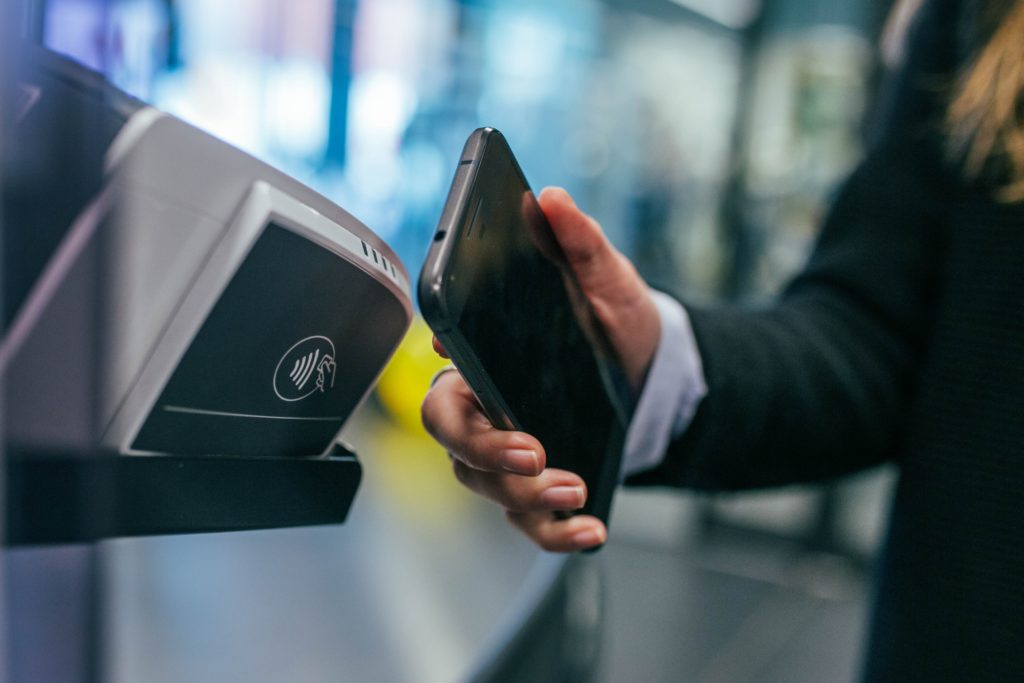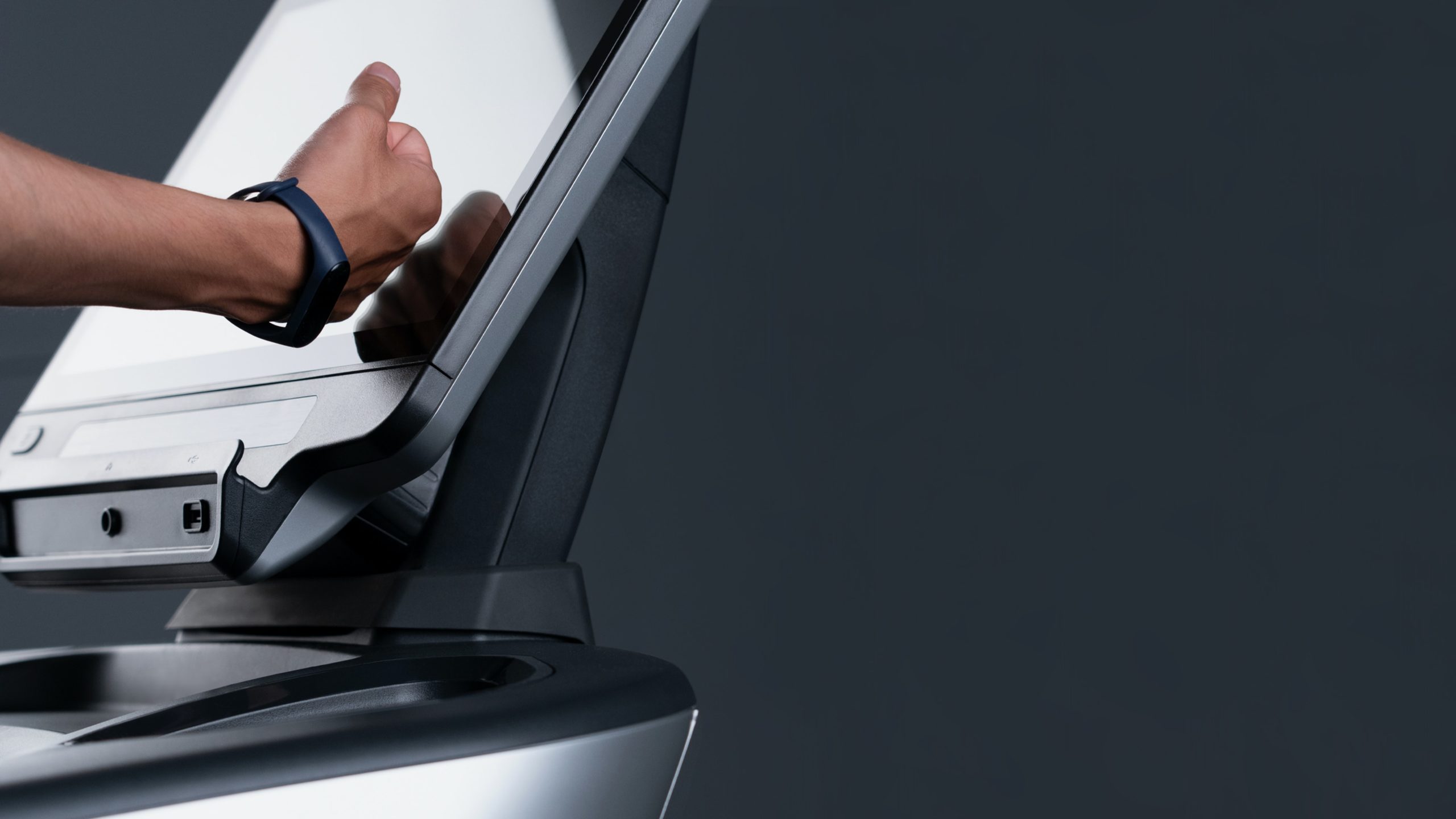Near Field Communication (NFC) and RFID are two similar wireless technologies with many applications. Like other wireless standards such as Wi-Fi and Bluetooth, NFC and RFID use radio waves to transmit signals. NFC is still an emerging technology; on the other hand, the use of RFID is widespread all over the world. You may use NFC or RFID for cashless payment, business process management, transportation, access control, and work flow management. So, which is better between NFC and RFID? In this article, we will provide an overview NFC and RFID, to help you make informed decision when choosing between the two.
Definition
- RFID is a wireless technology mainly used for data transfer. Its main objective is to identify and track automatically a tag attached to an object using radio waves. An RFID system comprises a tag, a reader, and an antenna.
- NFC is a short range wireless technology that enables devices equipped with NFC technology to establish a communication with each other by tapping them or by bringing them into proximity.
How RFID works

RFID is a wireless technology in which data flows from tags to the reading equipment. RFID tags have an antenna and a memory chip for storing data. To access the data, you need an RFID reader. These tags and readers are used in a wide range of applications. The reader sends signals to the tag via the antenna. NFC tags are small and flexible. They usually take the form of a sticker and cost less than 10 cents per tag. These tags are embedded in retail products to help maintain the inventory. RFID tags don’t need a line of sight for the reader to read.
Inventory and package tracking are the two main uses of RFID. However, RFID has many more uses. Most dog owners stuck them under the dog’s skin to help then find it in case it gets lost. Cars have the highway toll tag to automatically identify you at the toll reader. Airlines use RFID tags to track and control large loads of baggage. In banks and other organizations, RFID tags are used to gain access into high security locations.
RFID tags are either active or passive. Active RFID tags have their own power source and can thus broadcast with a read rang of up to 100 meters. This long range makes them ideal in industries where asset location and logistics are important.
The passive RFID tags don’t have their own power source. They are instead powered y the electromagnetic energy transmitted from the RFID reader. Strong radio waves are needed to power the tags. Passive RFID tags thus have a read range from near contact and up to 25 meters.
Below are the three different RFID frequencies:
- Low Frequency (LF) 125- 134 kHz – Scans up to 10 cm
- High Frequency (HF) 13.56 MHz – scans up to 1 m
- Ultra High Frequency 865 MHz to 960 MHz – 1-100m
LF and HF systems only read a few centimeters. However, UHF tags are often readable over distances of more than one meter.
Although in some cases RFID tags can store larger amounts of data, RFID are used to store simple identification on information.
Benefits of RFID
- RFID can scan many tags at the same time.
- RFID can scan data over great distances
- Line of sight is not needed to read data
- You can write data on tags if you have the right equipment
- RFID tags are cheaper than NFC tags.
- RFID tags can be deployed in a variety of environments.
RFID Use Cases
Applications where RFID is used include:
- Inventory tracking – locating for items within space
- Assert monitoring – Acquiring information from equipment in hard to reach places.
- Loss prevention – Receiving alerts when tags leave a certain area.
- Access Control – To ensure secure access based on unique information stored on tags.
Is RFID Secure?
Despite the benefits of RFID technology, the use of radio waves as RFID’s makes it susceptible to environmental factors and malicious users. Malicious users can use surfaces like foil to steal RFID card data. RFID is susceptible to hackers because interaction between the reader and RFID chip can be done without authentication making it vulnerable to man in the middle attacks and spoofing. Although modern RFID cards have added security for protection against these attacks, outdated RFID technology is still prevalent. A s a result, some tech companies have built products to protect RFID cards. These products include wallets and protective sleeves.
How to Keep Your RFID Cards Safe
Whether you use RFID cards daily or not, it is important to exercise precaution. To make it difficult for thieves to read your RFID card, place it next to your other cards in your wallet. Also get used to carrying your RFID card in your front pocket because it becomes much harder to be noticed.
Hackers can intercept RFID data while a few feet from the device. You should thus be constantly aware of your surrounding when using RFID enabled credit cards. If you have any doubts about your surroundings, consider using an alternative payment method.
Shield wallets and RFID sleeves are another option for improved security. They have special material for blocking scanners. You can also purchase a RFID jamming device which sends out signals that disrupt potential hackers. Alternatively you can DIY. Make an aluminum foil shield and use it to protect your RFID card when it’s not in use.
How NFC works

NFC is a newer technology honed from RFID. It operates at a maximum range of about 4 inches and has three modes of operation. These three modes give NFC the flexibility to use NFC many communication needs. Here is an overview of these three modes:
- Card Emulation: This mode provides the means to use your NFC enabled device as a credit card or debit card. This mode involves card type applications such as, motel pass cards, identification cards, ticketing, access control, loyalty cards, and any other card related task you can think off.
- Discovery (Read/Write Mode): This mode allows you to interact with information sources such as interaction with downloading coupons, smart advertising or using any information source that use both tags and smart posters. You can also write information to these smart information sources.
- Peer-to peer Communication: This mode creates connectivity between two NFC devices. When exchanging data with a fried via NFC, you are using the peer-to peer mode.
NFC tags can be used to store complex information. They can store up to 4 KB of data. This data can be in the form of text, URL or media. Almost every smartphone is equipped with NFC technology. This reduces the cost of implementing NFC because you can use your smartphone to, read and write data on a tag, obtain detailed metadata, launch a URL or an app when the tag is scanned, or even share data between two enabled NFC devices. You do not need to purchase an NFC reader.
Can NFC Devices Read RFID tags?
Phones with NFC capabilities can only read NDC and high frequency RFID. They must be extremely in close proximity. If you want to use it over long distances, you must use an external reader. You can find some of the best readers by simply searching Google.
Benefits of NFC
- Increased security because NFC only works when in close range.
- It allows peer-to-peer communication
- It can be used to store more complex data than RFID
- Some NFC readers can read RFID but RFID readers can’t read NFC tags.
- NFC technology is available on most smartphones
Use Cases for NFC
NFC has a wide range of applications for both companies and consumers. Some of its applications include:
- Contactless Payment: You only need to tap to pay. Examples of such payment platforms include Apple Pay, Samsung Pay, and Android Pay.
- Access Control: NFC only allows secure access control on tags
- Asset tags: This allows users to extract valuable information on the asset
- Peer-to peer File Transfer: It allows secure and quick transfer between NFC enabled devices
- Smart door locks: You no longer need to walk around with your door keys, your smart phone id enough. NFC has made it possible to use your phone to unlock smart doors.
- Healthcare: You doctor can affix an NFC monitoring tag to your skin. The tag sends stream of data about your body temperature, sugar levels, and much more to your phone. The data is then sent to a nurse.
Is NFC Secure?
NFC transactions are encrypted to ensure secure data transfer. Besides, NFC technology only works within short distances, eliminating the chances of hackers eavesdropping on communications. Additionally, a user must initiate the transaction between their device and NFC reader. You will be required to provide secondary verification like fingerprint or facial recognition. This makes it difficult for hackers to crack it. Lastly contactless payments that use NFC such as Apple Pay, uses a tokenization technique which makes NFC payments secure. Tokenization technique involves using randomly assigned numbers instead of your bank details. If you implement NFC technology correctly, it is secure.
Using NFC safely
- Read up any applications data usage policy before using NFC. Some application developers may access your private information and use it.
- Monitor NFC updates and patch your device promptly
- Turn off NFC when not using it. Besides saving power, it limits your exposure to attackers.
Summary
The table below sums up the differences between NFC and RFID wireless technologies.
| RFID | NFC | |
| Communication | Unidirectional | Bidirectional |
| Range | Up to 100 m | < 0.2 |
| Frequency | LF/HF/UHF/Microwave | 13.56 MHZ |
| Bit rate | Varies with frequency | Up to 424kbit/S |
| Power Consumption | Varies with frequency | < 1s mA |
| Continuous sampling | No | Yes |
Both RFID and NFC are highly valuable. Here is a summary of what we have learned:
- While almost every smartphone is embedded with NFC technology, RFID can be read from multiple tags at once and at great distance.
- NFC can store can be used to store complex data while RFID doesn’t need a line of sight. RFID is ideal if you want to identify many assets in a given area.
- RFID is an established technology while NFC IS still evolving. We expect it to expand further, providing great benefits to those that implement.
That’s all about NFC and RFID. I hope that you now understand how these two wireless technologies work and can choose the better one according to your purpose. Keep it here for related topics..
